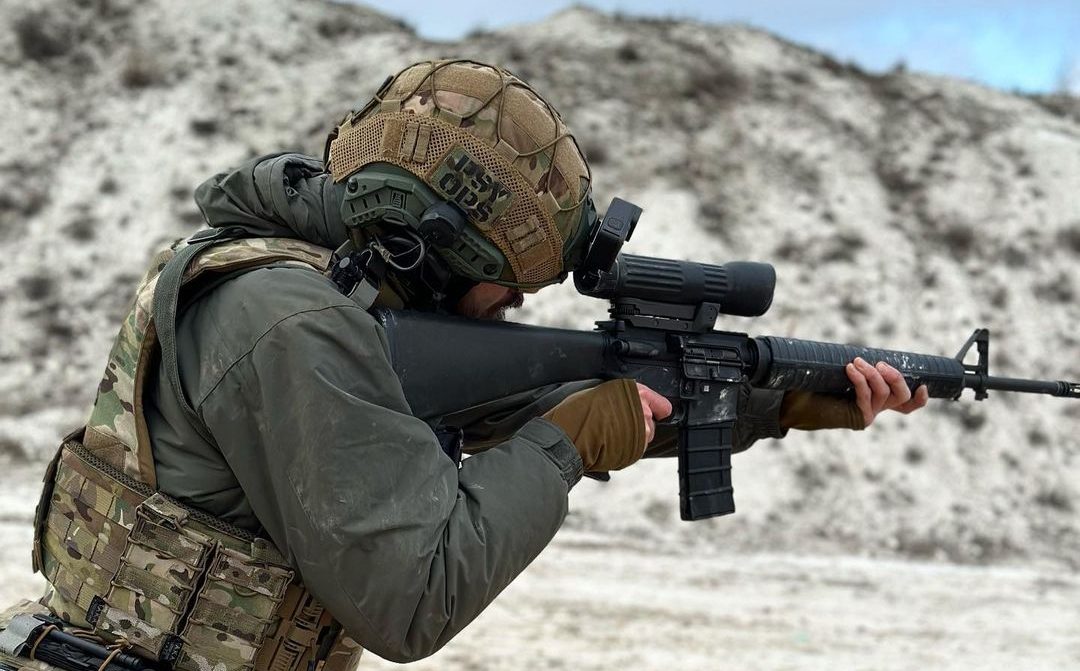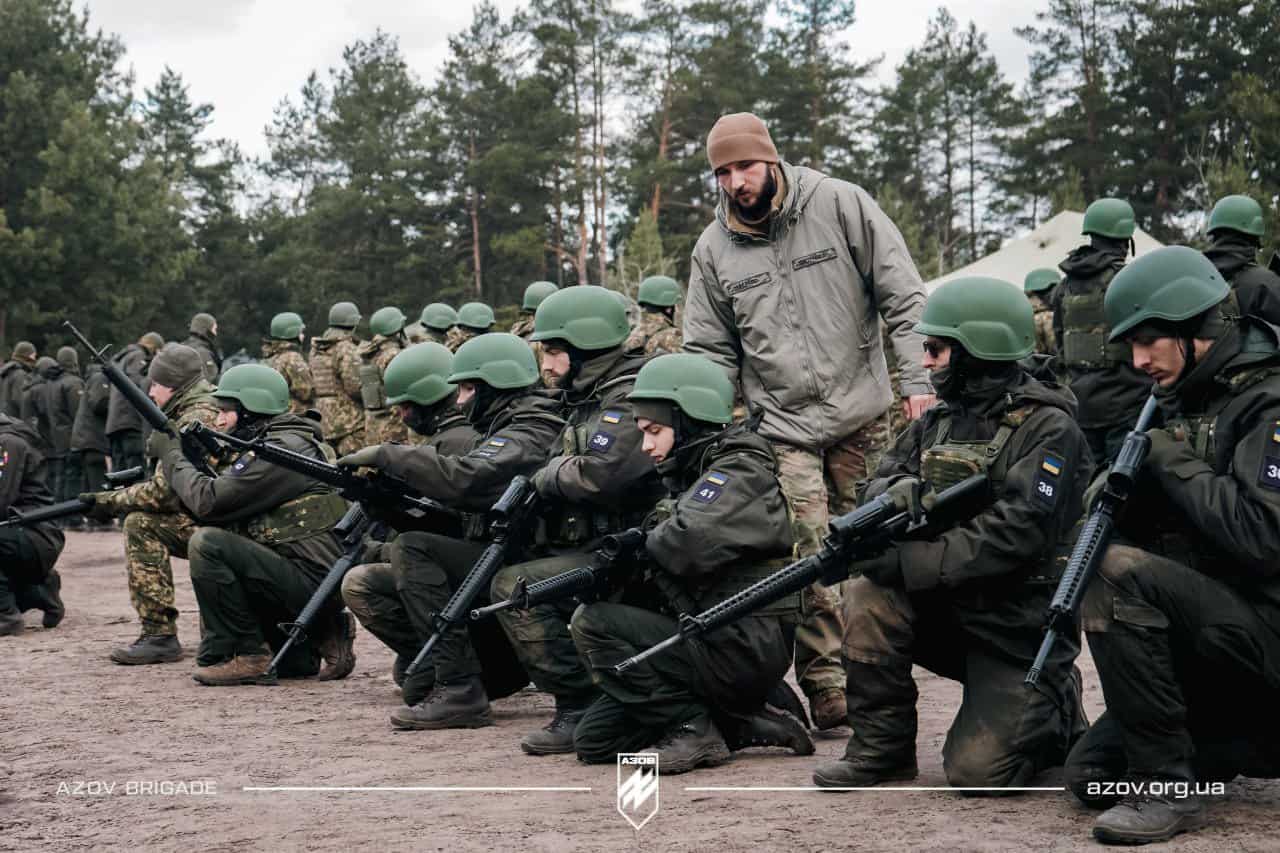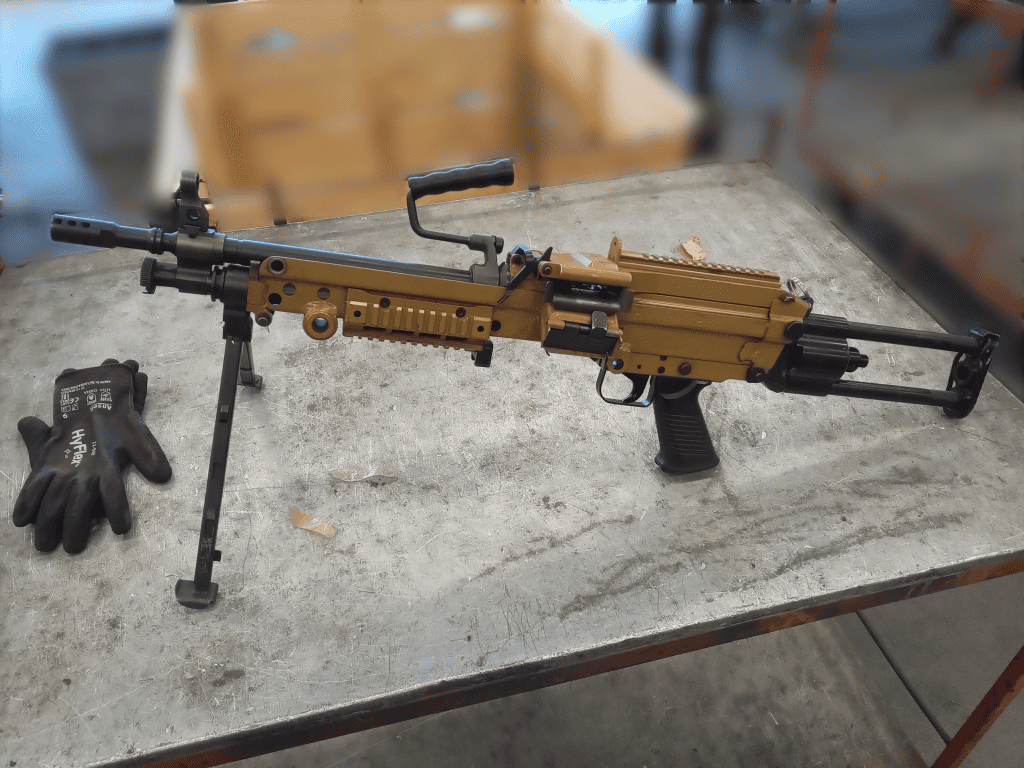
The Dutch military spoke about how they prepared their small arms for combat and sent them to Ukraine.
The armourer’s bench published this story.
In the summer of 2022, a small team of gunsmiths from the Dutch army worked quickly to check and prepare thousands of rifles selected for shipment to Ukraine. It was then that this weapon was first seen in the hands of the Ukrainian military.
The publication contacted a person associated with this weapons supply. She spoke about the colossal task: the preparation of rifles, pistols, optics, and light machine guns for transfer to Ukraine.

The main weapons that the team was preparing for departure were 5.56x45mm select-fire C7A1 rifles. They were manufactured in Canada under license from Colt. The A1 variant is easily identified by its combination of a handguard similar to that of the US M16A2 and its upper receiver, which has a length of STANAG Picatinny rail for mounting optics.
Since the early 2010s, Dutch C7A1 have been gradually upgraded to the C7NLD standard with new adjustable examples, handrail pins, and a built-in upper receiver (IUR). The remaining C7A1 were placed in storage – many were still painted in an old camouflage pattern.
During the preparation, each rifle was tested for barrel alignment, trigger mechanism and bolt carrier group. They were also inspected for damage or corrosion. If the rifle did not have significant defects, the inspection lasted on average about five minutes, and then the rifle was put aside and prepared for shipment.

So many C7A1 were tested and prepared that the team lacked the stock of standard C79 ELCAN optical sights to mount on them.
The source said that they even “used the ELCANs designated for the FN Minimi on the rifles… we also used the ones for the simulator [optics used on electronic indoor training ranges] eventually. We had to remove the front lenses [which allow them to be used on the simulator ranges].”
After checking, the weapon was equipped with optics. Boresighting of optics was carried out at a distance of 300 meters. The source claimed that it “took the longest of all and really trained our arms. Holding the rifle in the air with one arm and adjusting the optics with the other.” After that, they noted that the “tools for inspection and alignment for optics were completely worn out.”
Along with the more numerous C7A1 rifles, a number of the earlier C7 pattern rifles with a carrying handle and a selector with a 3-round burst option rather than the fully automatic found on the C7A1s, were also shipped to Ukraine. These earlier C7s are rarely seen in imagery from Ukraine.
The Dutch media source explained that when the weapon arrived at the warehouse in preparation for shipment, “every gun came with one magazine and no optic at first.” But it was decided that the rifles needed optics. Gunsmiths initially mounted Aimpoint Comp M3 optical sights, then older ELCANs (3.4 × 28), Hi-Mag ELCANs, which were originally mounted on the Dutch Army’s FN Minimi, and finally used ELCANs for simulators. All this optics has since been used in Ukraine.

The team of armorers was only allowed to carry out simple repairs on rifles intended for shipment, so weapons that were seriously damaged – had corrosion, bent barrels, damaged receivers, or furniture – were immediately rejected.
Initially, some of the damaged rifles were dismantled to repair other faulty weapons, but after a short time, only a quick basic repair was carried out.
The recovery process took weeks of hard work, and although the interlocutor could not voice the exact number of rifles prepared for transfer, he claimed just under 10,000 barrels were checked, repaired, and prepared for shipment.
The source also said that the Netherlands handed over a significant number of Glock 17 Gen.3 pistols and FN Minimi 5.56x45mm light machine guns.

Dutch rifles can be seen in numerous photos and videos from the fighting in Ukraine. The C7A1 rifles were used by the Ukrainian Special Operations Forces, the Kalinovsky Regiment, and more recently by units of the 47th Mechanized Brigade, the 3rd Assault Brigade and the NGU`s “Azov” Brigade.
The weapon can be easily identified by its configuration, characteristic of ELCAN and Aimpoint optics, and by the small QR identification code seen on the right side of the magazine shaft.
Being asked by the participant of the operation what he thought about the rifles used in Ukraine, the source said: “I’m glad to see they are being used there. It makes me proud of my work.”
Militarnyi published a list of security assistance provided to Ukraine, which was published by the Dutch Ministry of Defense. The list includes all weapons that have been transferred to Ukraine.
Підтримати нас можна через:
Приват: 5169 3351 0164 7408
PayPal - paypal@mil.in.ua
Стати нашим патроном за лінком ⬇
Subscribe to our newsletter
or on ours Telegram
Thank you!!
You are subscribed to our newsletter